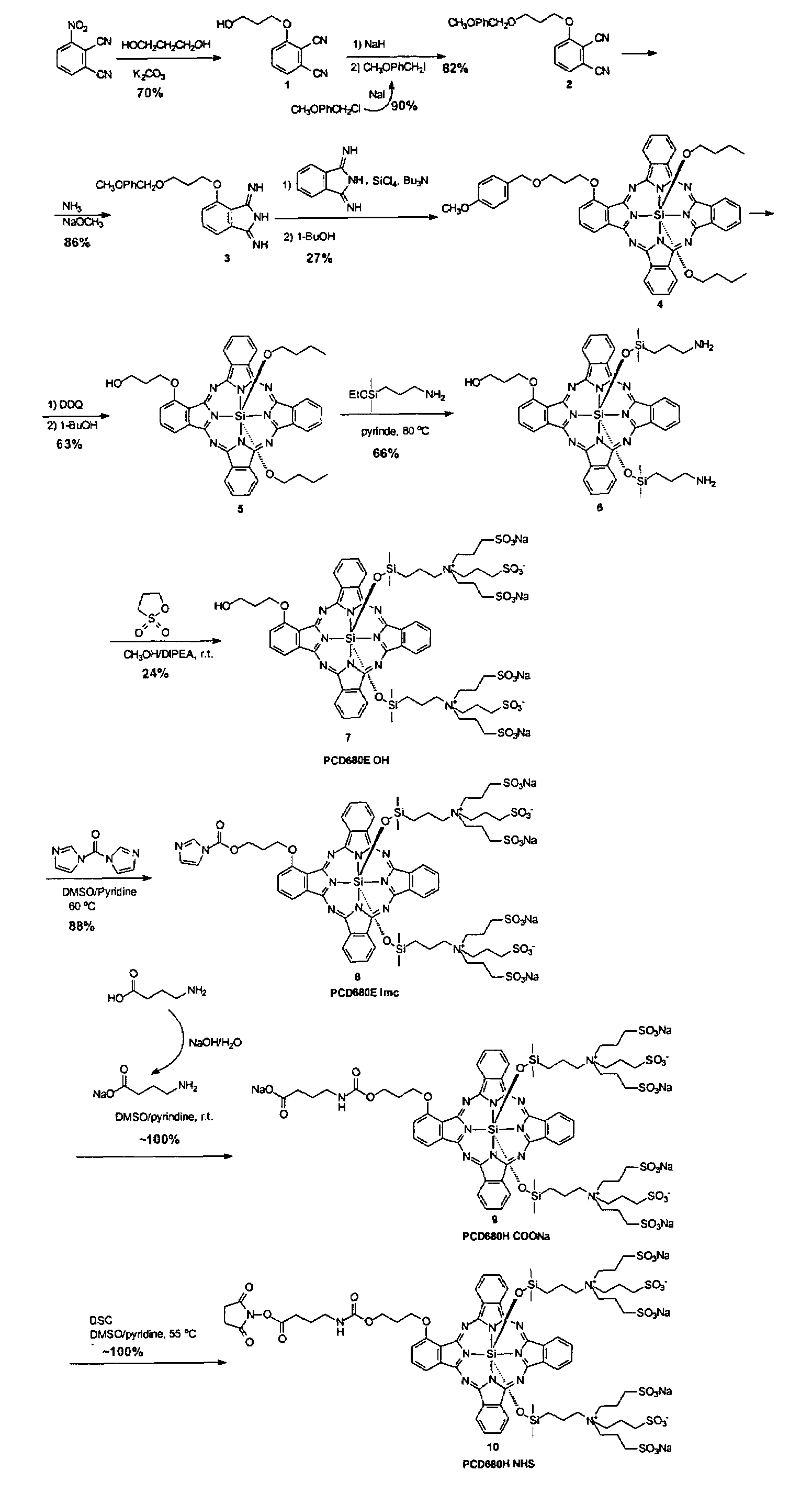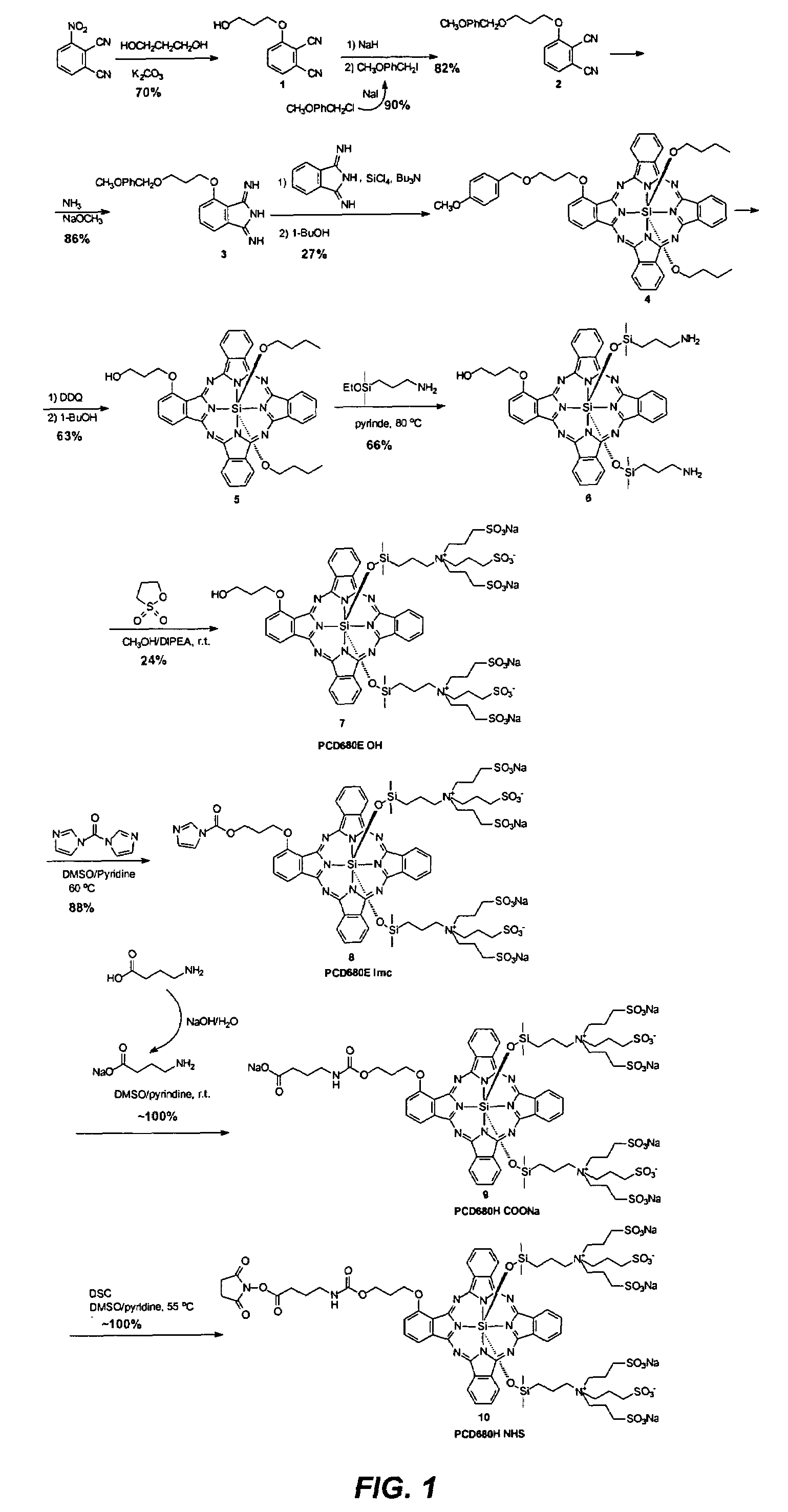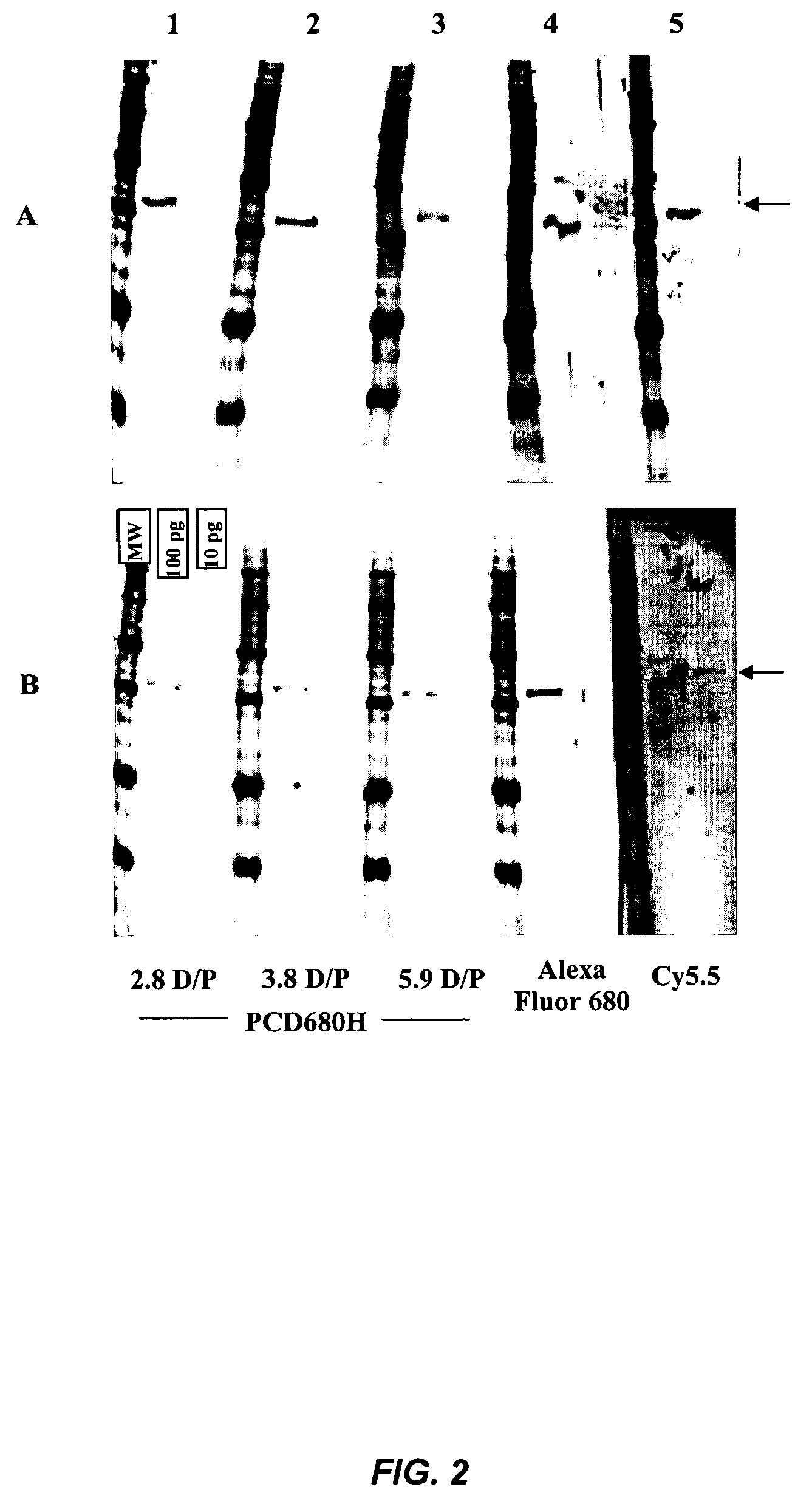Phthalocyanine dyes
- Summary
- Abstract
- Description
- Claims
- Application Information
AI Technical Summary
Benefits of technology
Problems solved by technology
Method used
Image
Examples
example 2
[0199]This example illustrates an antibody labeling protocol with PCD680H NHS ester dye.
[0200]The antibody to be labeled is dialyzed in phosphate-buffer saline (1×PBS) buffer to remove any low molecular weight impurities in the antibody solution. The antibody is adjusted to a concentration of 5 mg / mL to 10 mg / mL.
[0201]PCD680H NHS ester dye is dissolved in high-quality, anhydrous dimethylsulfoxide (DMSO) and stored at −20 ° C in a freezer. The concentration of the dye in DMSO is 50 mg / mL to 100 mg / mL.
A. Labeling Procedure:
[0202]Mix the antibody solution with approximate the same volume of 0.2 M NaHCO3 / Na2CO3 buffer (pH 8.4) and let stand about 5 min at 4° C. The protein has a concentration of >2 mg / mL to 5 mg / mL in the solution.[0203]Add the calculated volume (based on the desired normal dye to protein ratio) of the solution of PCD680H NHS ester dye in DMSO to the antibody solution and mix the dye and protein by pipetting the mixture briefly.[0204]Incubate the labeling reaction at 4°...
example 3
[0213]This example illustrates a proposed synthesis route of a compound of the present invention.
[0214]2-(6′-hydroxylhexylthio)phthalonitrile (I) was made by treating a commercially available 4-nitrophthalonitrile with 6-mercapto-1-hexanol at the presence of potassium carbonate in N,N-dimethylformamide solution (Scheme 18).
[0215]The alcohol group in phthalonitrile (I) was then masked with a tetrahydropyranyl group by reacting phthalonitrile (I) with dihydropyran together with p-toluenesulfonic acid monohydrate, Scheme 19.
[0216]1,4-di(methoxylethoxyl)phthalonitrile (IIA) was made from a commercially available 2,3-dicyanohydroquinone. As shown in Scheme 20, 2,3-dicyanohydroquinone was first treated with sodium hydride in N,N-dimethylformamide at 0° C. then reacted with methoxylethoxyl mesylate, which was made from its corresponding alcohol and methanesulfonyl chloride.
[0217]Another dialkoxy phthalonitrile, 1,4-di(methoxyl)phthalonitrile (2) was also prepared using this method as sh...
example 4
[0228]This example illustrates a compound of the present invention wherein a dye is linked to a carbodiimide.
[0229]The PC680-CDI was prepared by reacting PCD680I NHS ester (I) with 10 equivalents of the 3-dimethylamino-1-propylamine in DMSO, and the product is precipitated in ether. The structure of the purified product (II) was confirmed by MS.
[0230]The final CDI product (below) can be prepared from II as described by Kimura et al. (EP 1 038 938) and used for labeling of DNA and RNA.
PUM
| Property | Measurement | Unit |
|---|---|---|
| Quantum yield | aaaaa | aaaaa |
| Fluorescence | aaaaa | aaaaa |
| Luminescence | aaaaa | aaaaa |
Abstract
Description
Claims
Application Information
 Login to View More
Login to View More - R&D
- Intellectual Property
- Life Sciences
- Materials
- Tech Scout
- Unparalleled Data Quality
- Higher Quality Content
- 60% Fewer Hallucinations
Browse by: Latest US Patents, China's latest patents, Technical Efficacy Thesaurus, Application Domain, Technology Topic, Popular Technical Reports.
© 2025 PatSnap. All rights reserved.Legal|Privacy policy|Modern Slavery Act Transparency Statement|Sitemap|About US| Contact US: help@patsnap.com



